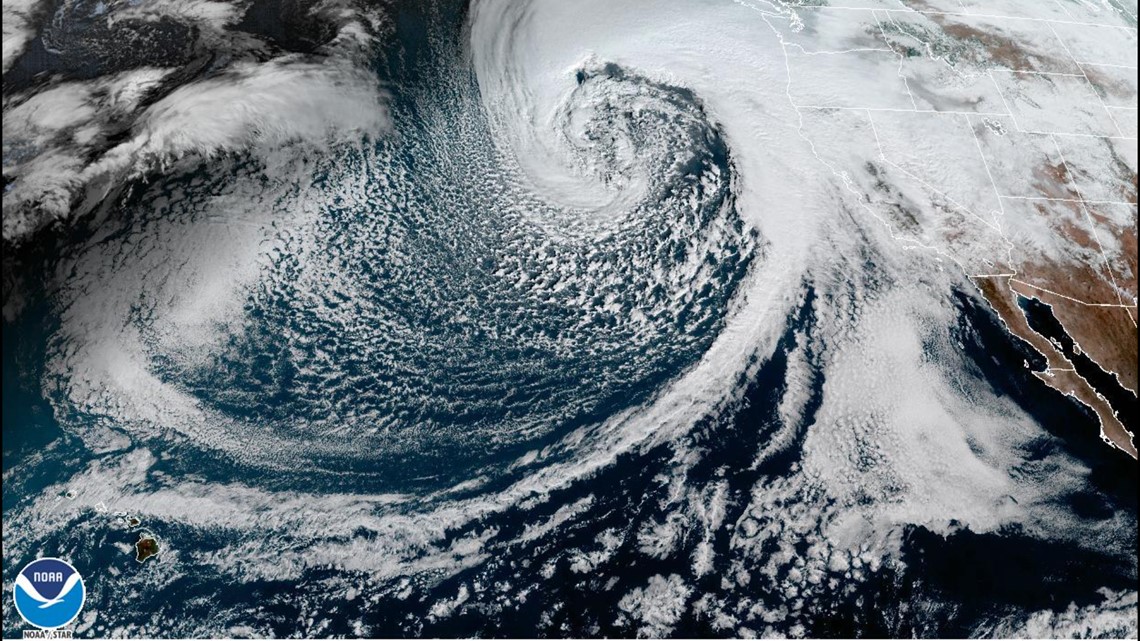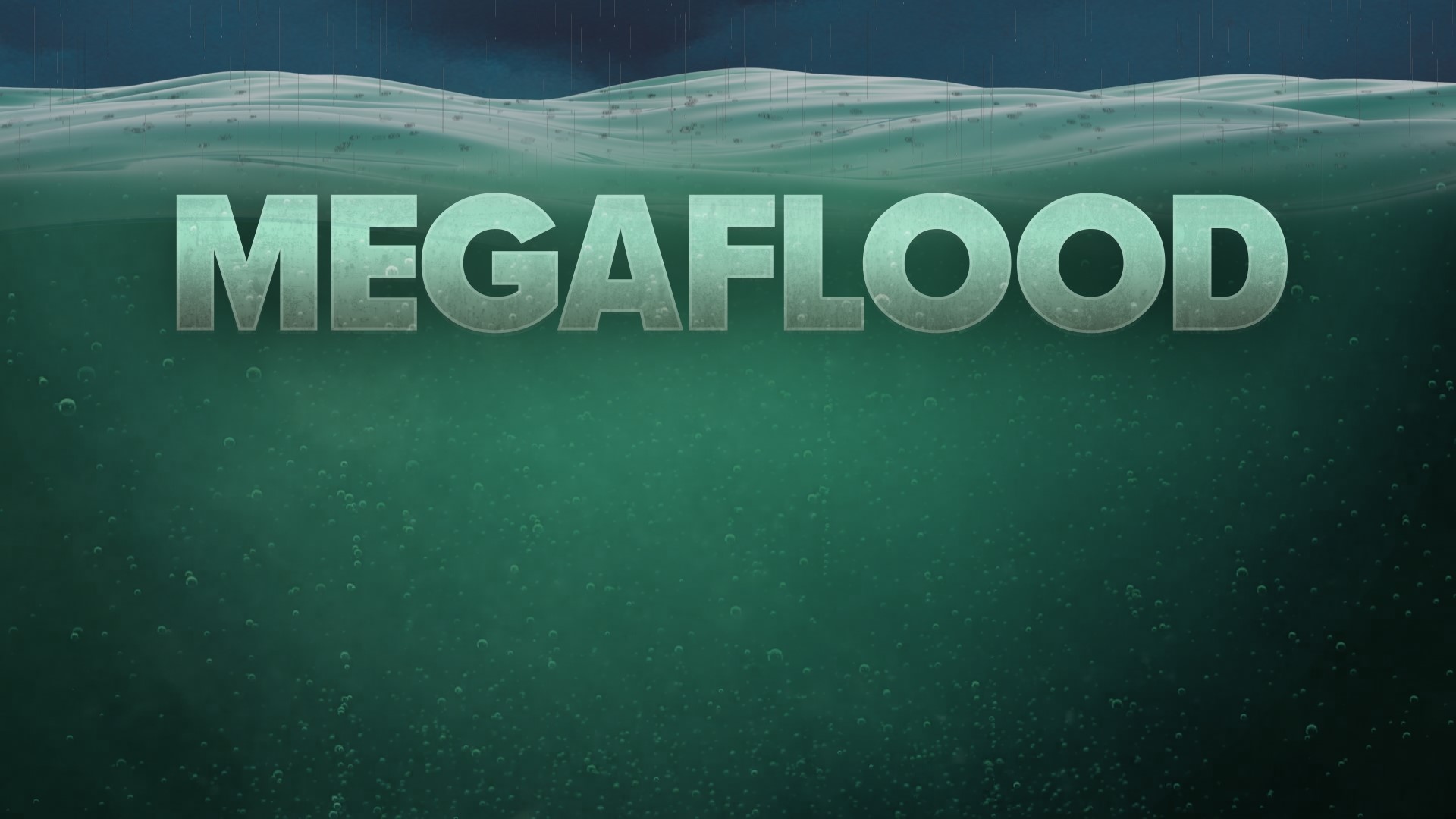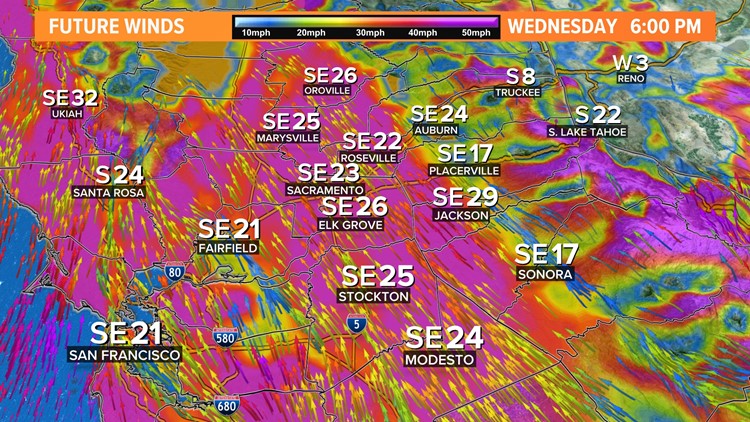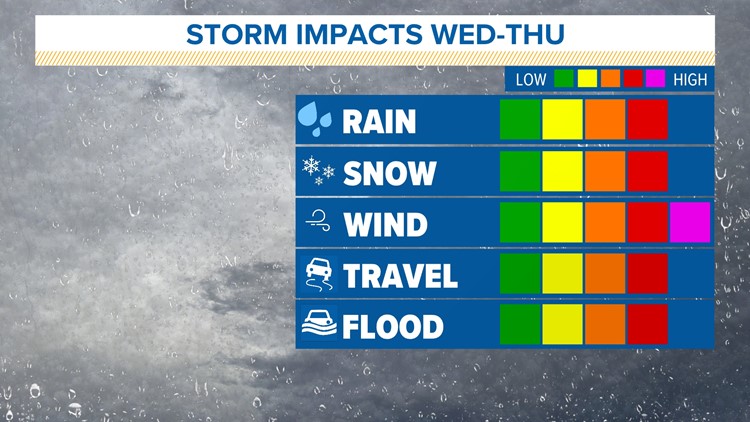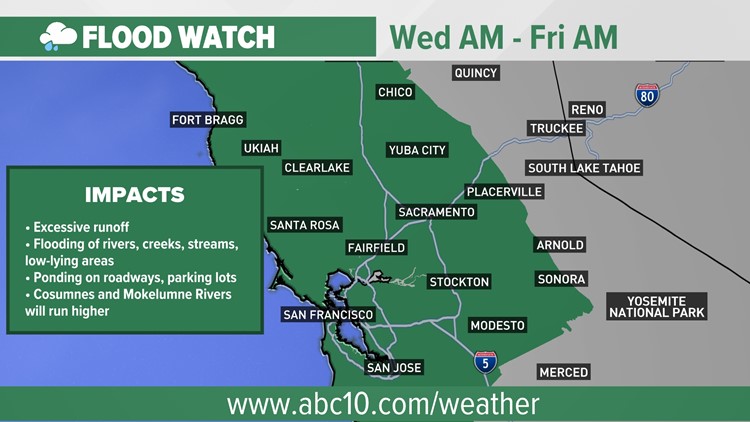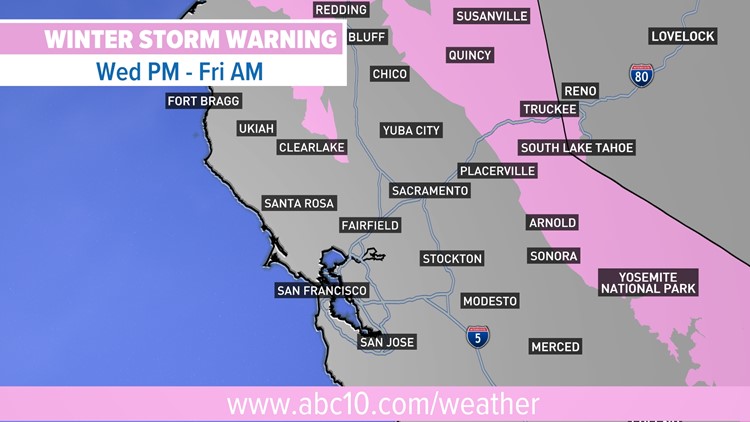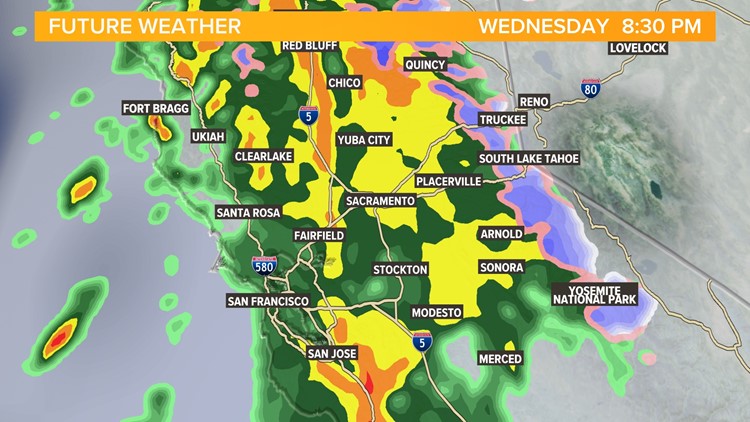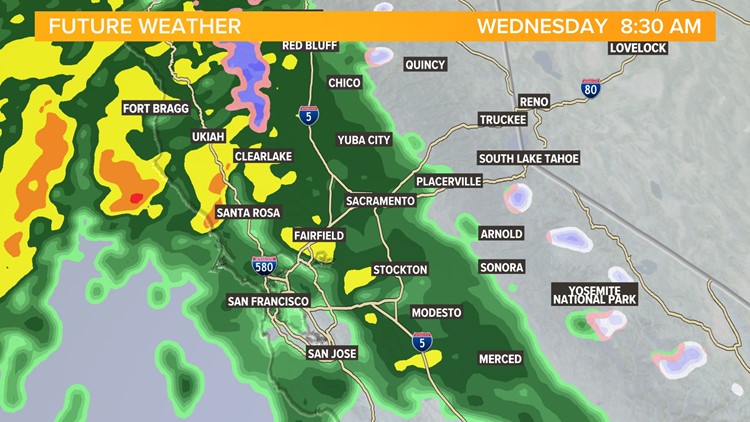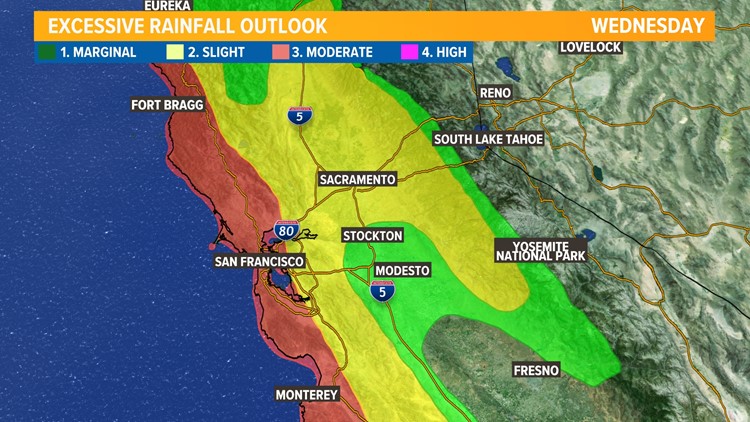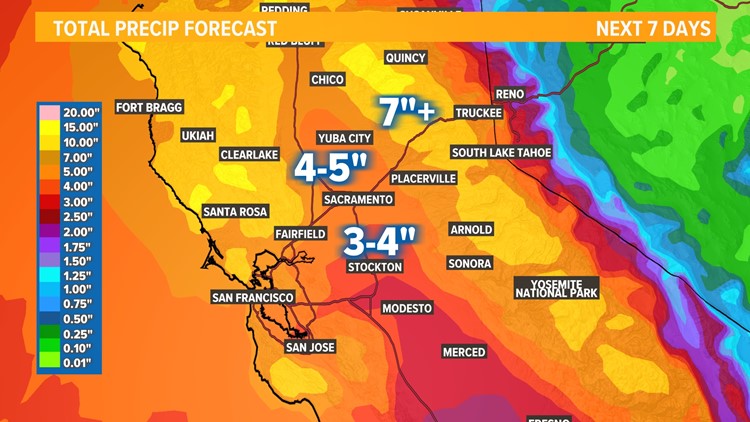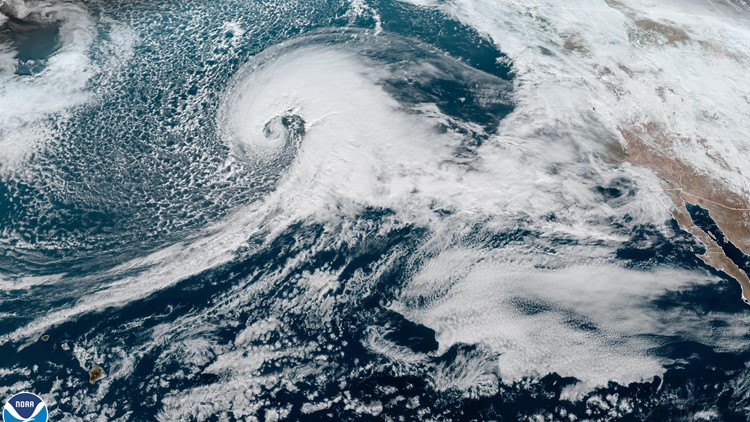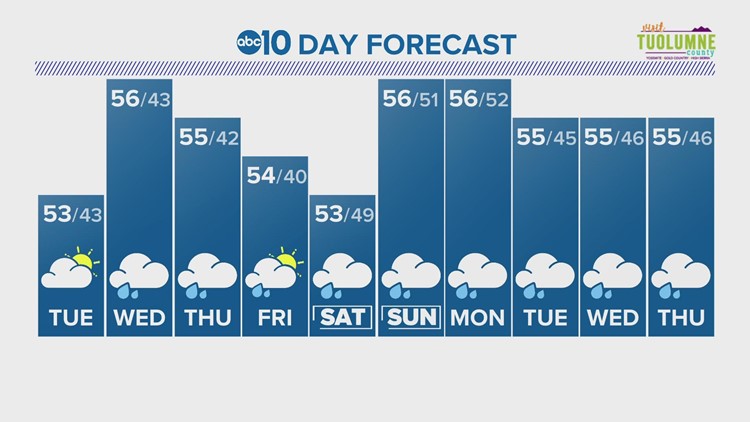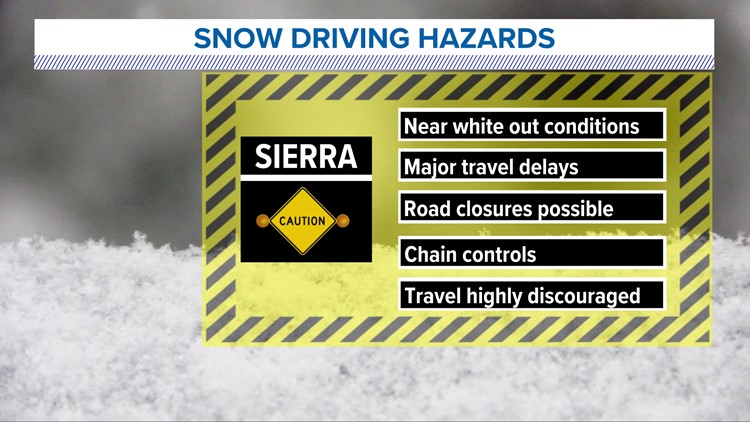SACRAMENTO, Calif. — The latest storm system in a parade of systems has reached 'bomb cyclone' status in the Pacific off the coast of California.
The cyclone has undergone explosive cyclogenesis, bombing out at a central pressure of 956 millibars. To obtain the status of a 'bomb cyclone,' a cyclone has to drop 24 millibars in 24 hours, according to the American Meteorological Society glossary.
The central pressure dropped from 985 millibars to 956 millibars in 24 hours, exceeding the threshold by a healthy margin as it entered a region favorable for explosive cyclogenesis. Unlike hurricanes, these storms don't need bathtub-like waters to rapidly intensify, but rather temperature and pressure differences.
It is no doubt a frightening way to describe a storm, but only describes the rapid intensification a storm undergoes rather than its overall strength. Prior conditions, namely saturated soils and high rivers and creeks, make this a dangerous situation as strong winds and heavy rain result in the potential for widespread power outages and flooding across Northern California.
The deepening of the storm allows the storm to gain strength as it approaches land. As a result, wind speeds increase as do precipitation rates due to the access to an atmospheric river. The system will siphon the moisture from the atmospheric river's tropical moisture.
The valley will likely see 1.5-3" of rain and wind gusts of up to 60 mph. Areas in the foothills will see 3-5" with the system and gusts of 50-60 mph. As for the Sierra, 1-3 feet of snow are expected with gusty conditions as well, albeit more calm than in the valley and foothill locations.
Stunning satellite imagery shows the raw power of the cyclone spinning off the coast. The mid-latitude cyclone has a textbook comma shape, with a warm front providing the first wave of precipitation and a strong cold front traversing the region Wednesday evening.

